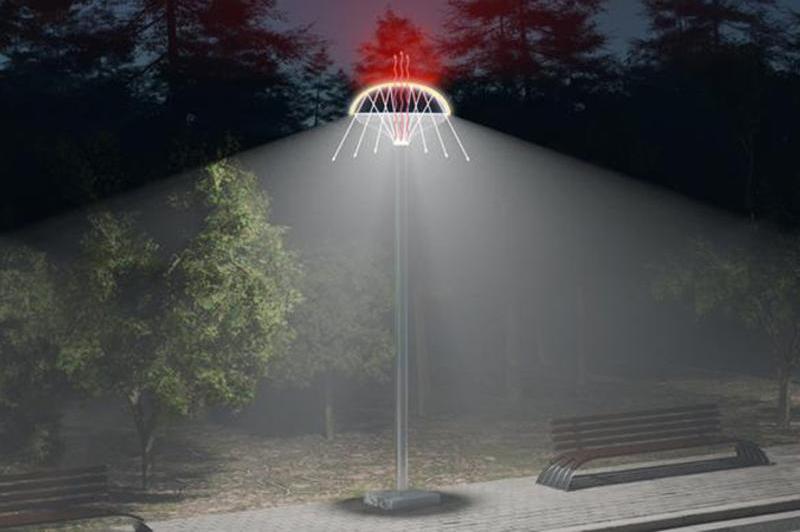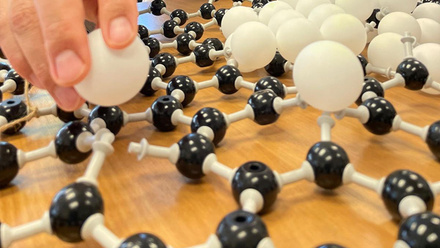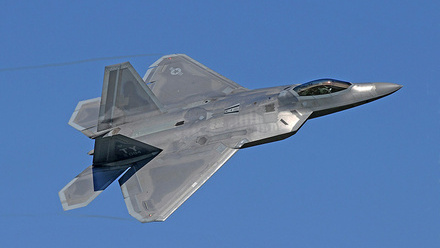Nanoplastic for sustainable street lighting
NanoPE reportedly enhances thermal radiation emission from LED surfaces to reduce their operating temperature.

NanoPE reflects visible light but transmits infrared light
© Ivan GromichoThis could reduce the carbon emissions from light emitting diode LED streetlights and improve their energy efficiency, according to a collaboration between King Abdullah University of Science and Technology and King Abdulaziz City for Science and Technology in Saudi Arabia.
LEDs generate heat, which raises their temperature and risks damaging the electronics and shortening the device’s lifespan. Approximately 75% of the input energy in LEDs is eventually lost as heat, explain the scientists.
Even a small improvement in thermal radiation can have a positive cumulative effect on energy use and, as a result, carbon emissions, according to the researchers.
This advance is enabled by recent developments in nanoporous polyethylene (nanoPE) films. It features, nano- and microscale pores that induce >95% reflectance in the visible range and back to the ground, illuminating the area beneath, and >80% transmittance in the mid-infrared (MIR), enabling thermal radiation.
In this way, infrared light, most responsible for thermal radiation, passes through the device while visible light is reflected.
Typical LED streetlights direct their light towards the object to be illuminated, which is why they point towards the ground. They also are designed such that thermal radiation stays trapped inside the LED.
By contrast streetlights coated with nanoPE are turned upside down, so they are directed towards the sky (which has a cooling effect) and away from the object to be illuminated.
The sky-facing orientation allows the heat from the chip to radiate directly to the cold sky.
Professor Qiaoqiang Gan, King Abdullah University of Science and Technology, explains, 'This creates a thermal radiation channel directly to the sky, bypassing traditional opaque enclosures, enabling efficient cooling while preserving or enhancing lighting.'
He continues, 'The nanoPE film permits this thermal radiation (MIR transmittance) while reflecting visible light back to the ground. This dual-function film reduces chip temperature (up to 7.8°C in lab, 4.4°C outdoors) without reducing brightness. Instead, illumination is enhanced by ~4-5% due to lower junction temperatures.'
The luminous flux increased from 378.6 lumens (control) to 388.2 lumens with 360µm nanoPE cover. They also report the light distribution to be more uniform and diffuse, enhancing perceived brightness and coverage.
To create a nanoplastic that reflects low-wavelength light but passes high-wavelength light (infrared), the scientists carefully made pores as small as 30nm into the plastic, as well as stretching and transforming it into a thinner sheet.
No active cooling components are needed, meaning lower maintenance and operating costs. While hydrophobic, UV-stable and dust-resistant nanoPE is said to be durable under outdoor conditions.
Finally, the material is said to have a self-cleaning effect from rain/wind, restoring performance after environmental exposure.
Based on this work, the estimated energy savings for the US market are 1.9TWh/year if fully implemented. With a CO₂ reduction of about ~1.3Mt/year, equal to 0.03% of US annual emissions (2018 baseline).
Next, the scientists intend to optimise the nanoPE film thickness for the best cooling-illumination trade-off. They want to scale up production via bi-axially oriented PE with industry partners, and finally, integrate into commercial LED fixtures while ensuring downward emission compliance.




